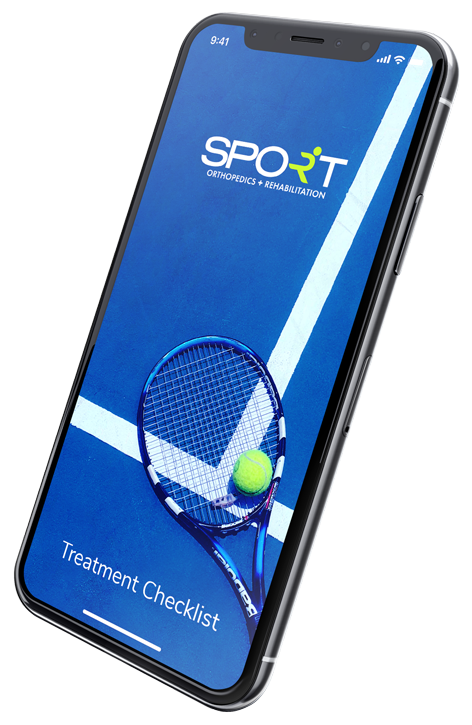ACL Surgery and ACL Tear Treatment in Wylie, TX
ACL Tear Wylie Specialist for Reconstruction
Home » ACL Reconstruction Wylie
ACL Tear Surgery in Wylie, TX
Discover comprehensive ACL reconstruction surgery at SPORT Orthopedics + Physical Therapy, where we specialize in restoring mobility and function for individuals in Wylie, TX, and surrounding areas. If you’re considering ACL surgery, our expert team of orthopedic surgeons is here to provide tailored treatment plans to address your specific needs and goals.
With a focus on advanced surgical techniques and compassionate care, we aim to guide you through a seamless recovery process, helping you return to your active lifestyle with confidence and strength. Trust SPORT Orthopedics + Physical Therapy to deliver exceptional orthopedic care and support on your journey to optimal health and wellness.
To schedule an appointment with us, please call our office at 469-200-2832 today.
ACL Surgery Information
- What Is the ACL?
- What Can Cause ACL Tears?
- How to Prevent ACL Tears
- How Do I Know if I’ve Torn My ACL?
- What Is ACL Reconstruction Surgery?
- What Happens After ACL Reconstruction?
- What Is the ACL Reconstruction Surgery Cost?
- Do I Really Need ACL Surgery?
- Is ACL Repair a Major Surgery?
- Does ACL Reconstruction Hurt?
- What Are Alternatives to Reconstruction Surgery?
- Knee Anatomy
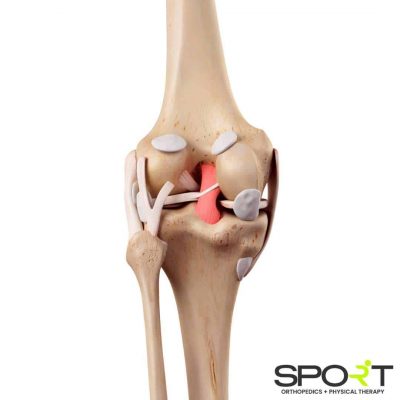
Now offering virtual appointments
Time to focus on recovery
What Is the ACL?
The anterior cruciate ligament (ACL) is one of the major ligaments in the knee that plays a crucial role in stabilizing the joint during physical activities. It connects the femur (thigh bone) to the tibia (shin bone) and helps control the forward movement of the tibia in relation to the femur. The ACL also contributes to rotational stability in the knee.
Injuries to the ACL are common, particularly among athletes engaged in sports that involve sudden stops, changes in direction, or jumping. When the ACL is torn or damaged, it can result in instability, pain, swelling, and limited mobility in the knee, often necessitating surgical intervention such as ACL reconstruction to restore stability and function.
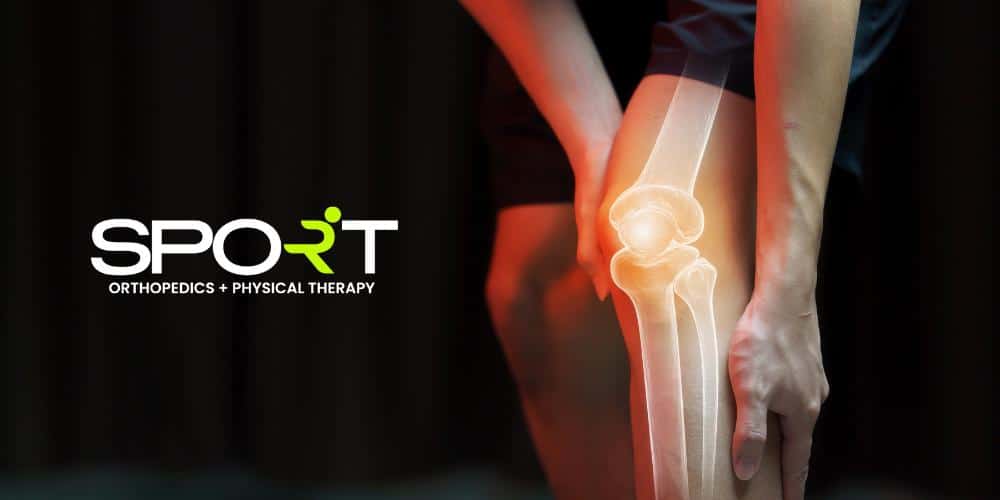
Knee Anatomy
The knee is a hinge joint connecting the thigh bone (femur) to the shin bone (tibia) and the fibula. Key structures of the knee joint include the menisci, which act as shock absorbers, and four major ligaments: the anterior and posterior cruciate ligament (ACL and PCL) and the medial and lateral collateral ligament (MCL and LCL), providing stability.
Tendons like the quadriceps and patellar tendon connect muscles to bones, aiding movement. Surrounding the joint is a synovial membrane producing synovial fluid, reducing friction and nourishing the articular cartilage. This complex anatomy enables the knee to withstand forces while facilitating stability and motion.
What Can Cause ACL Tears?
An ACL injury or tear can occur due to a variety of reasons, often associated with sudden twisting or hyperextension of the knee joint. Sports-related activities, particularly those involving sudden stops, changes in direction, or jumping, are common causes of ACL tears. Soccer, basketball, football, and skiing are among the sports where ACL injuries frequently occur, often due to direct impact, collisions, or awkward landings.
Non-contact injuries, where the knee twists or pivots abruptly while the foot remains planted, can also lead to ACL tears. These movements can put excessive stress on the ligament, causing it to stretch or tear. Such injuries may happen during activities like cutting, pivoting, or landing from a jump with poor technique or insufficient muscle strength to support the knee joint.
In some cases, ACL tears can result from traumatic events, such as motor vehicle accidents or falls from a height, where the knee sustains significant force or impact. These high-energy injuries can cause the ACL to tear partially or completely, often accompanied by damage to other structures within the knee joint.
How to Prevent ACL Tears
Preventing an ACL injury involves a combination of targeted exercises, proper technique, and injury prevention strategies. Strengthening the muscles around the knee, particularly the quadriceps, hamstrings, and glutes, can help improve joint stability and reduce the risk of ACL injuries. Incorporating exercises like squats, lunges, leg presses, and hamstring curls into a regular workout routine can enhance muscle strength and balance, providing better support for the knee during physical activity.
Moreover, focusing on neuromuscular training, which includes exercises to improve balance, agility, and proprioception, can help individuals develop better control over their movements and reduce the likelihood of ACL tears. These exercises often involve activities like single-leg squats, lateral hops, plyometric drills, and balance exercises on unstable surfaces, which challenge the body’s ability to maintain stability and control joint movements.
Proper technique and body mechanics are essential for injury prevention, especially during sports and activities that involve cutting, pivoting, or jumping. Athletes should be mindful of their movements and strive to maintain good posture, alignment, and balance to reduce the stress on the knee joint and minimize the risk of ACL tears. Coaches and trainers can play a crucial role in teaching athletes proper techniques and providing feedback to help them execute movements safely and effectively.
How Do I Know If I’ve Torn My ACL?
If someone suspects they have a torn ligament, they may experience symptoms such as a sudden popping sensation in the knee at the time of injury, followed by significant pain, swelling, and instability.
The knee may feel weak or give out during weight-bearing activities, and individuals may have difficulty bearing weight on the affected leg or fully straightening it. Additionally, they may notice bruising around the knee joint and have limited range of motion.
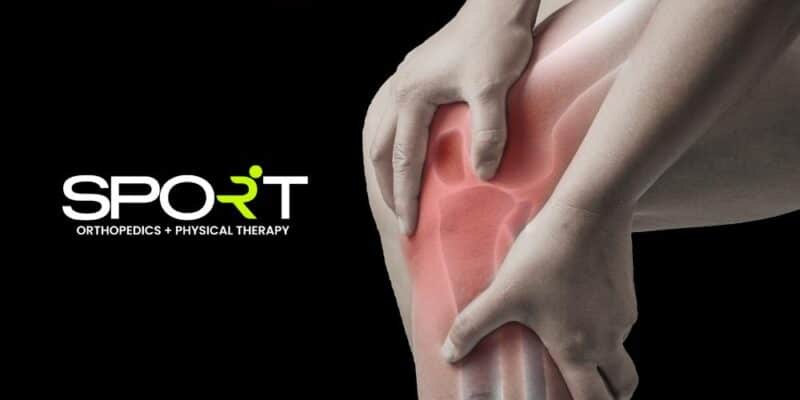
Pivot Shift Test
During the pivot shift test, the examiner stabilizes the patient’s thigh while applying a valgus (inward) force to the knee joint. Then, the examiner flexes the knee and applies a rotational force while extending it.
A positive pivot shift test result is indicated by a sudden, palpable shift or “clunk” felt as the tibia subluxates and then reduces back into place during this maneuver, indicating ACL tears and rotational instability of the knee joint. This test helps diagnose a torn ACL and determine the severity of the injury.
Lachman Test
During the Lachman test, the patient lies face up, and the examiner stabilizes the femur with one hand while grasping the tibia with the other hand. The examiner then applies an anterior force to the tibia while assessing the amount of anterior translation (forward movement) of the tibia relative to the femur.
A positive Lachman test result is indicated by increased anterior tibial translation compared to the unaffected side, suggesting ACL laxity or a complete tear. This test is sensitive for detecting ACL injuries and aids in determining the extent of ligament damage in the knee.
Anterior Cruciate Ligament Reconstruction in Wylie, TX
If you have a serious ACL injury or if conservative methods have failed to alleviate your symptoms, surgical treatment may be the best option for you. ACL reconstruction is a highly effective surgical solution for ACL tear injuries, and our Wylie orthopedic surgeons have extensive experience performing this surgery.
What Is ACL Reconstruction Surgery?
ACL (anterior cruciate ligament) reconstruction surgery is a surgical procedure performed to repair a torn or ruptured ACL in the knee joint. During the procedure, the damaged ligament is replaced with a tissue graft, typically harvested from the patient’s own patellar tendon, hamstring (as in a hamstring tendon autograft) tendon, or a cadaveric donor.
The surgery is usually performed arthroscopically, using small incisions and a camera to guide the surgeon. The graft is secured in place using screws or other fixation devices, allowing it to gradually integrate with surrounding tissue and provide stability to the knee.
ACL reconstruction surgery aims to restore normal function, stability, and range of motion to the knee joint, helping patients return to their regular activities and sports with reduced risk of re-injury.
ACL Repair vs Reconstruction
The main difference between ACL repair and ACL reconstruction lies in the approach to treating a torn anterior cruciate ligament (ACL) in the knee. ACL repair involves suturing the torn ligament back together to promote healing and stability. This technique is often used for partial tears or injuries located at the ligament’s proximal or distal ends.
In contrast, ACL reconstruction involves replacing the damaged ligament with a graft, typically sourced from the patient’s own tissue or a donor. This procedure is more commonly employed for complete ACL tears or when the ligament is significantly damaged.
ACL reconstruction aims to restore stability and function to the knee by creating a new ligament, while ACL repair preserves the patient’s natural ligament tissue whenever possible.
After ACL tear treatment, patients typically enter a comprehensive rehabilitation program aimed at restoring strength, mobility, and function to the knee.
ACL Reconstruction Recovery
Initially, patients may experience pain, swelling, and stiffness, which can be managed with medications, ice therapy, and elevation of the leg. Physical therapy plays a crucial role in ACL tear treatment recovery, starting with gentle range-of-motion exercises to regain flexibility and gradually progressing to strengthening exercises to rebuild muscle strength and stability around the knee joint.
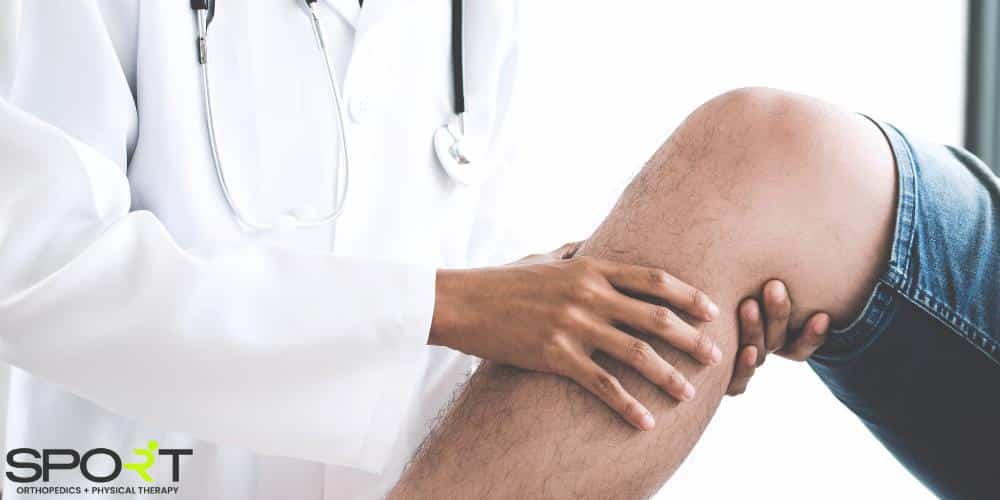
ACL Surgery Recovery Time
The duration of ACL surgery recovery time varies depending on individual factors, such as the extent of the injury, the type of ACL graft used, and the patient’s adherence to rehabilitation protocols. Generally, patients can expect to return to light activities within a few weeks post-surgery, but full recovery may take several months. This is the case for many serious sports injuries.

ACL Reconstruction FAQs
What Is the ACL Reconstruction Surgery Cost in Wylie?
The cost of anterior cruciate ligament (ACL) reconstruction surgery can vary significantly depending on various factors such as geographical location, the specific surgical techniques and materials used, the surgeon’s expertise, and whether additional procedures or services are required.
In Wylie, TX, the total cost of ACL reconstruction surgery includes pre-operative consultations, surgical fees, anesthesia, hospital or surgical center fees, post-operative care, and rehabilitation expenses. The best way to understand the potential cost of your ACL surgery is to speak with your surgeon.
Do I Really Need ACL Surgery?
In general, individuals who experience significant instability in the knee, recurrent episodes of giving way or buckling, or are unable to participate in desired activities due to ACL injury may benefit from surgery. Additionally, athletes and active individuals who engage in sports or activities that place high demands on the knee joint, particularly those involving cutting, pivoting, or jumping, may opt for surgery to restore stability and reduce the risk of further damage.
Is ACL Repair a Major Surgery?
Yes, ACL reconstructions are considered major surgeries due to their invasive nature and the complexity of the procedure. It typically involves arthroscopic surgery, where small incisions are made around the knee joint to access the damaged ligament and perform the reconstruction.
Does ACL Reconstruction Hurt?
ACL reconstruction surgery typically involves some degree of pain and discomfort during the initial recovery period. Patients may experience pain at the surgical site, as well as discomfort from swelling and stiffness in the knee joint.
However, pain management strategies, such as medications prescribed by the surgeon, ice therapy, and leg elevation, can help alleviate discomfort and promote healing. As recovery progresses and rehabilitation exercises are initiated, pain levels usually decrease, although some discomfort during physical therapy sessions is common.
What Are Alternatives to ACL Reconstruction Surgery?
While ACL reconstruction surgery is often recommended for individuals with significant ACL injuries, there are alternative treatment options available, particularly for those with partial tears or less severe injuries. These alternatives can include the following.
- Wearing a knee brace
- Physical therapy
- Platelet-rich plasma (PRP) injections
- Knee gel injections
Contact SPORT Orthopedics + Physical Therapy Today
As you consider your options for ACL reconstruction surgery, trust SPORT Orthopedics + Physical Therapy in Wylie, TX, to provide compassionate care and expert treatment tailored to your needs. Our experienced team of orthopedic surgeons and physical therapists is dedicated to guiding you through every step of the journey towards recovery, from initial consultation to post-operative rehabilitation.
With state-of-the-art facilities and a commitment to excellence, we strive to help you regain stability, mobility, and confidence in your knee, allowing you to return to the activities you love with renewed strength and vitality. Contact us today to schedule a consultation and take the first step towards a healthier, more active lifestyle.


